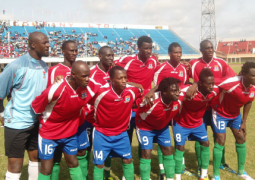Stakeholders
in disaster risk reduction and relief services on Monday gathered at the NaNA
conference hall to discuss the way forward on disaster risk reduction.
The
daylong forum was part of events marking the International Day for Disaster
Risk Reduction, and it was organised by the National Disaster Management Agency
(NDMA), with the support of ActionAid The Gambia.
Organisers
said the gathering was designed to serve as a platform to lobby for more
support for investments that can contribute to the reduction of shocks and
their impacts.
The
participants also brainstormed on ways to attract investment to early warning
systems, research, capacity building for the NDMA and grassroots stakeholder
response to an emergency.
Speaking
on the occasion, Alhagie Manjang, deputy permanent secretary at the Ministry of
Environment and Natural Resources, said the International Day for Disaster
Reduction, 13 October, was set aside by the United Nations General Assembly to
promote a global culture of risk-awareness and disaster reduction.
The
2016 celebration marks the launching of the new Sendai Seven Campaign centering
on the seven targets of the Sendai Framework, the first of which is reducing
disaster mortality.
The
executive director of NDMA, Lieutenant Colonel Alhajie Sanneh, said there is a
need to mainstream disaster risk reduction into the national development
process.
Almamo
Barrow, head of Policy and Programmes at ActionAid, said disaster risk
reduction is the concept and practice of reducing disaster risk through
systematic efforts to analyse and reduce the causal factors of disaster.
Examples
of disaster risk reduction, he said, are reducing exposure to hazards,
lessening vulnerability of people and property, wise management of land and the
environment, and improving preparedness and early warning for adverse events.



